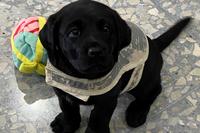One of the main tasks of a Roman legion was building and maintaining roads. No one would argue that the legions were namby-pamby or unable to tackle the most threatening conventional threats of the day -- at least until they met those early Germans.
The New York Times ran an op-ed today using Veterans Day as a platform to highlight the seemingly-ageless debate between what the author calls "the traditionalists who believe that our armed forces should continue to maintain as their core mission waging conventional state-on-state wars, like the first Persian Gulf War. On the other side are the reformers, like Gen. David Petraeus, who want to build on the lessons the Army and Marine Corps have learned in the irregular wars in Afghanistan and Iraq, and broaden the military’s skill set to fashion a more effective counterinsurgency and nation-building force."
The author, Dominic Tierney, an assistant professor of political science at Swarthmore College, says what he calls the "reformers" can look to the early days of the Republic for inspiration.
Here is the core of his argument: "Troops cut down trees and farmed. They built schools, hospitals and, by 1830, 1,900 miles of roads. They dug canals, erected bridges and dredged harbors. Soldiers constructed everything from the Minot’s Ledge lighthouse on the Massachusetts shore to the Washington Aqueduct, which provides the capital’s water. In 1820, Col. Zachary Taylor, the future president, commented, 'The ax, pick, saw and trowel has become more the implement of the American soldier than the cannon, musket or sword.'
"American troops also helped to survey and map the West. In the most famous expedition, from 1804 to 1806, Capt. Meriwether Lewis and Second Lt. William Clark led a party of nearly 30 men, including three sergeants and 22 enlisted soldiers, to the Pacific Ocean. The United States Army Corps of Topographical Engineers, or “topogs,” became a major locus of American science, collecting flora, fauna and geological specimens, and publishing their findings in prestigious journals."
Many strategists and senior officers worry today that the U.S. military may be losing its edge in the complex and expensive job of shaping the international scene and deterring future and present adversaries. This requires power projection and the realistic threat of nuclear and conventional war. But it also requires the deployment of soft power. As Adm. Gary Roughead, chief of naval operations, tells anyone who will listen, our relief efforts after the great tsunami in the Pacific played an enormous role in convincing governments and people that the United States was not only interested in killing terrorists, but also was powerful and wise enough to help the helpless. China could not do the same.
Maybe some of the problem with these discussions is the language. Few Americans outside the national security world are likely to think much of the country bolstering its soft power. Maybe "non-lethal operations" conveys the reality better. After all, the planes, ships, trucks and fabulous logistics are essential components of power projection, as are the soldiers, sailors and airmen who execute those missions.
The New York Times op-ed author says that "some officers warn that an army of nation-builders would lose its edge at conventional warfare. But in keeping with the founders’ belief that the soldier’s role was to build, not just to destroy, we need our own multipurpose military — an Army and Marine Corps with duties that extend far beyond winning tank battles or artillery duels against enemy states, or even fighting at all."
Perhaps it is time to refocus at least part of the Army Corps of Engineers and aim it outward to do what it has done at home -- build infrastructure and repair damage from disasters. Perhaps the Corps should form the bedrock of the expeditionary aid capability of which so many senior members of the Obama administration have spoken, but done so relatively little to create.
And there are those Roman legions, whacking each others with swords, shields, tridents and pikes, and then heading out to survey and build roads and bridges. Rome lasted quite a while.







